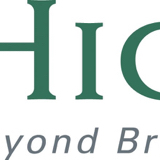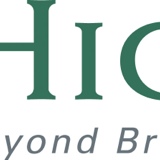Information
-
Document No.
-
Audit Title
-
Client / Site
-
Conducted on
-
Prepared by
-
Location
-
Personnel
1. Employee Welfare
-
1.1 Portable water readily available for all employees
-
1.2 Adequate toilets, washing facilities and maintenance
-
1.3 First aid supplies available, accessible and stocked
2. Procedures
-
2.1 Startup kit information posted
-
2.2 Safety and SDS manuals maintained and available
-
2.3 Emergency procedures developed and rehearsed
-
2.4 Site safety orientation conducted for all employees, orientation stickers on hard hats
-
2.5 3SP's developed and approved
-
2.6 Incident investigation performed and documented
-
2.7 Weekly toolbox trainings conducted for AMH and subs
-
2.8 Daily safety inspections are documented and one per week turned in to AMH
-
2.9 JHA's discussed and documented daily
3. Access
-
3.1 Adequate no trespassing & construction signs, public access is restricted
-
3.2 Temporary lighting in all areas is maintained and adequate
-
3.3 Emergency exits identified and labeled
-
3.4 Public is protected from open excavations and other hazards
-
3.5 ABC fire extinguishers available within 100'; 3000 square feet; refuel ops >25',<75'
-
3.6 Walking/Working surfaces are free of trip/slip/fall hazards. (Including Ice, snow, and water)
4. Storage
-
4.1 Housekeeping
-
4.2 Flammables/chemicals stored in approved, secured areas with spill containment in place
-
4.3 Bonding used during flammable liquid transfer
-
4.4 Bulk fuel containers stored 20' from building
-
4.5 Oxy/fuel cylinders stored upright and secured with valve caps in place
-
4.6 Oxy/fuel cylinders are separated when not in use or installed with a fire wall
-
4.7 Fire extinguishers no less than 25' where flammable liquids of 5 gallons or more are stored
5. Elevated Work
-
5.1 Fall protection enforced at 6'
-
5.2 Competent person on site for scaffolding erection, dismantling and inspection
-
5.3 Scaffolding set up properly
-
5.4 Scaffolding inspected prior to every shift
-
5.5 Guard rail system in place (+- 42" with 200# capacity) for top rail and mid rail (150# capacity)<br>
-
5.6 Holes and openings protected and/or covered and labeled "hole" or "cover"
-
5.7 Non-conductive ladders are used
-
5.8 Step ladders are used in full and open position
-
5.9 Extension ladders 36" above landing or have grab rail, tied off, 4:1 ratio
6. Tools, Equipment & PPE
-
6.1 Guarding intact on all tools and equipment
-
6.2 Extension cords are 3 wire type, in good condition, no electrical tape repairs
-
6.3 Extension cords are hard or extra-hard rated
-
6.4 GFCI in place for all temporary wire not plugged into permanent receptacle outlets
-
6.5 100% hard hats
-
6.6 100% safety glasses
-
6.7 Task-specific PPE is properly utilized
-
6.8 Live electrical of 50 volts or more guarded against incidental contact
-
6.9 Competent person(s) identified: excavating, scaffolding, confined space, lockout/tag out
-
6.10 Excavations are properly sloped, benched or shielding is in place
-
6.11 OUPS contacted or to excavations
-
6.12 Cranes have documented, daily inspections
-
6.13 Crane swing radius is barricaded
-
6.14 Qualified signal and rigging person identified
-
6.15 Certified crane operator
-
6.16 Documented inspections performed on all rigging
-
6.17 Tag lines used on all picks
-
6.18 Aerial lifts inspected prior to each use (scissor lifts contain annual and frequent inspections)
-
6.19 Aerial lifts operated by qualified operators
-
6.20 Rebar and other implement hazards are protected
-
6.21 Hoist and elevator capacity clearly posted
-
6.22 No smoking signs posted and enforced
-
6.23 Hot work permits completed prior to all hot work
-
6.24 Welding curtains installed for welding and cutting
-
6.25 Confined space work has testing and an attendant with established rescue procedures
-
6.26 Safety violations notification forms written and issued
-
6.27 Corrective actions taken and documented within 72 hours of safety concern notification
-
Other Issues
-
Signature
Ratings Section - FOR AMH SAFETY TEAM ONLY
-
5 - Consistently Exceeds Expectations
4 - Occasionally Exceeds Expectations
3 - Meets Expectations
2 - Occasionally fails to meet Expectations
1 - Consistently fails to meet Expectations -
Emergency procedures developed and rehearsed
-
Weekly toolbox safety training conducted for AMH and Subs
-
Daily Safety inspections are documented and one per week turned in for AMH and Subs
-
General Housekeeping
-
Fall Protection enforced at 6 Feet
-
100% Hard Hats
-
100% Eye Protections
-
Corrective actions taken and documented within 72 hours of safety concern notification
















